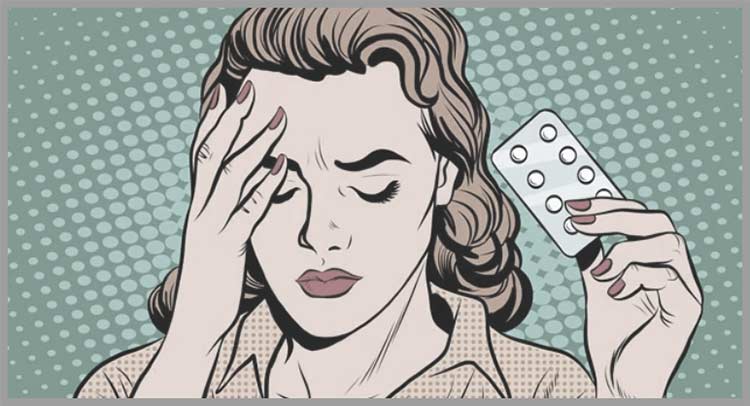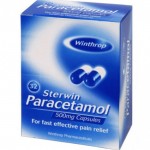Last Updated on February 18, 2025
Headache is one of the most frequent complaints of patients. There are a number of factors that can cause a headache.
Headaches vary in duration, nature, and intensity. By their origin, they are divided into primary and secondary. Primary headaches are an independent pathology, in which headache is the first and main complaint. These include migraine, tension headache, cluster headache. The cause of secondary headaches are diseases that have arisen as a result of damage to the cranial structures (traumatic brain injury, tumors, brain infections, vascular pathology) or that appeared for the first time in connection with another disease.
Headache is one of the most common complaints that patients visit doctors. To date, there are 45 known diseases associated with headache. In 1988, the International Headache Society adopted a classification according to which 13 main types of headache can be distinguished. Each of them has its own treatment tactics.
Almost everyone has had a headache at some time, and most of us have had it many times. A minor headache is nothing more than an unpleasant experience that is relieved by taking regular pain relievers, food, coffee, or rest. Most headaches are not the result of a serious medical condition, but if you have a very severe or uncharacteristic headache, you should consult with a specialist in order to rule out a life-threatening condition requiring urgent care (intracerebral hemorrhage, brain tumor, or cerebral vein thrombosis). Fortunately, such problems rarely occur. However, you should know how to control the vast majority of non-threatening headaches.
According to the WHO, over the past year, almost half of adults have experienced a headache at least once. Regular headaches are among the most common disorders of the nervous system, but unfortunately the population is not perceived as serious disorders, since they are mostly episodic in nature, do not lead to death and are not contagious. Low rates of seeking medical advice in developed countries may indicate that many people with headaches are unaware of effective treatments. An estimated 50% of people with headaches self-medicate.
Classification
- migraine;
- tension headache;
- cluster headache and chronic paroxysmal hemicrania;
- various forms of headache not associated with structural damage;
- headache associated with a head injury;
- headache associated with vascular disorders;
- headache associated with non-vascular intracranial disorders;
- headache associated with the use of certain substances or refusal to take them;
- headache associated with an infection;
- headache associated with metabolic disorders;
- headache or facial pain associated with abnormalities of the skull, neck, eyes, nose, sinuses, teeth, mouth, or other facial or cranial structures;
- cranial neuralgia, neuropathy, and deafferent pain;
- unclassified headache.
The most common of all headaches are two types: migraine – 38% and tension headache -54%, as well as post-traumatic headache.
Migraines are recurrent attacks of headache, usually in one hemisphere. It occurs in 2-6% of the population aged 10 to 30 years (mainly in women).
Chronic daily headache. A migraine can develop into a persistent headache. It is not pulsating, diffuse, not as intense as migraine, does not cause attacks of nausea and vomiting. Initially, the cause of its occurrence was considered a combination of migraine with another type, most often psychogenic. Today it has been scientifically proven that the abuse of drugs that relieve headaches (especially analgesics and ergotamine drugs) can be the basis.
Tension headache is the most common type of headache affecting about 5% of the total population. Its origin is based on hereditary predisposition, autonomic dysfunction, individual psychological personality traits, depressive inclusions, chronic stress (physical or psychoemotional). Feels like a tension headache resembles squeezing the head (tight helmet, tight tape), accompanied by a feeling of heaviness and goose bumps. It is localized in the forehead, eyes, vault of the skull, sometimes radiates to the temples, neck, shoulders and face. The absence of characteristic symptoms of tension headache makes it difficult to diagnose. More than half of the patients are unreasonably diagnosed with symptomatic headache (associated with such organic diseases of the brain as traumatic brain injury, arachnoiditis, neuroinfection, intracranial hypertension, etc.).
Cluster headache occurs mostly in men (5-6 times more than in women) between the ages of 20 and 40. Presumably, the basis of the disease is vascular mechanisms.
Trauma-related headache. In practical neurology, there is a tendency to associate chronic headaches with traumatic brain injury (TBI) on the basis of “after this means because of this.”
Diagnostics
At the first stage of diagnosis, it is necessary to establish whether the headache is associated with structural damage (organic brain disease). It is most important to exclude tumors, acute disorders of cerebral circulation, especially subarachnoid hemorrhage, hematomas, complications of acute traumatic brain injury, inflammatory diseases of the brain, its membranes, paranasal sinuses, eyes, the presence of glaucoma, etc. This requires an X-ray of the cervical spine, ultrasound examination of intracranial and extracranial arteries, MRI of the brain.
It is imperative and important for the timely diagnosis of the primary appeal to a neurologist to determine the nature and scope of research.
The International Classification identifies “danger signals” for headaches that cause suspicion of structural damage:
- the onset of headache for the first time after 50 years;
- sudden severe (“thundering”) headache (subarachnoid hemorrhage, first attack of migraine, temporal arteritis);
- “hot flush” to the head (intracranial hemorrhage);
- an increase in headache when coughing, straining, physical stress (intracranial hypertension, migraine);
- an increase in headache over time: hours-days (meningitis, encephalitis), days-weeks (tumor, temporal arteritis);
- headache – the cause of nocturnal awakenings (swelling, cluster headache attack, migraine);
- in the morning, nausea, vomiting, hiccups, dizziness (swelling).

A common mistake with headaches. Amitriptyline for headaches


























